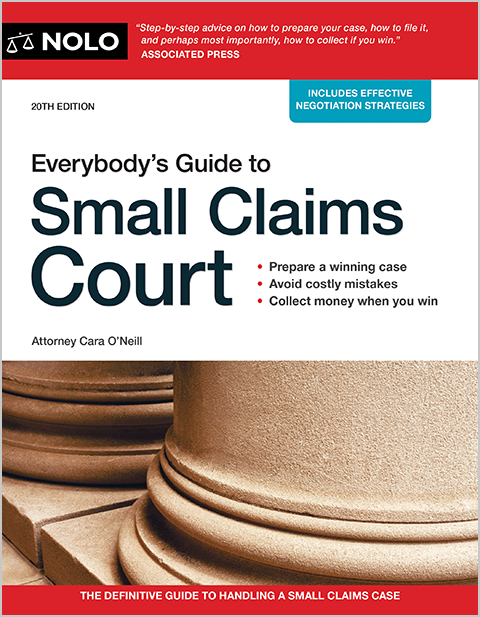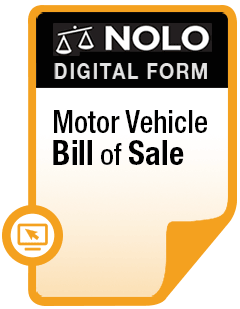Damage to the vehicles involved in an accident can often help tell the story of who was at fault for the crash.
One of the trickiest aspects of any car accident case is figuring out who was at fault. Accidents occur quickly, and recollections are often unreliable. Sometimes there's credible witness testimony or video footage of the collision to make things easier, but often you need to look harder for clues to liability, including:
- location of the vehicle damage
- extent of the vehicle damage, and
- details about the context of the accident.
First off, is the driver of the car with the most damage usually at fault for a crash? This is a common question, and the answer is that not much can be gleaned from the extent of vehicle damage alone. Think of a typical rear-end crash, where the tailing vehicle is almost always at fault, but the leading vehicle often sustains more damage.
But vehicle damage can be a significant part of the larger fault analysis after a car accident. Let's take a closer look at this issue.
Why Determining Car Accident Fault Is Important
Figuring out who was at fault for a car accident is important because it usually dictates who will bear financial responsibility for injuries and other losses ("damages" in the language of the law) resulting from the crash.
Generally speaking, the person who causes the accident is liable for any vehicle damage or personal injuries that result. Most of the time, the at-fault driver won't pay this money themselves; their car insurance company will.
A big exception is accidents in no-fault car insurance states, where injured drivers will make a claim with their own car insurance companies, at least initially regardless of who was at fault for the accident. (Note: Injured passengers can usually make a claim under the no-fault policy of the driver of the vehicle in which they were riding at the time of the accident.) And then there's uninsured drivers. Learn more about what happens if the other driver has no car insurance, and when you're in an accident but you're uninsured.
Who Determines Fault for a Car Accident?
With most kinds of car accidents, it's a car insurance company that will take the lead in determining who was responsible for causing the crash. In many cases, it'll be a claims adjuster who conducts the investigation. This usually involves:
- talking to the drivers and passengers, and any witnesses
- looking at photographs and video surveillance footage
- examining any police report, vehicle repair estimates, and other relevant documentation.
(Note: It's a different story when your car accident case ends up in court. In the very rare event that a car accident lawsuit goes all the way to trial, it's the judge or jury that will consider all the evidence and decide who should be held legally responsible for causing the underlying crash.)
How Does a Car Insurance Company Investigate an Accident?
Depending on the accident, the first part of the investigation will be whatever the claims adjuster can accomplish from the office. But if necessary, they'll head out for some fieldwork to complete the investigation.
This could include visiting the site of the accident and checking out the vehicle damage before repairs take place. By reviewing vehicle damage and other physical clues from the accident, an investigator will have a significant piece of the puzzle for figuring out who caused the accident. Get more details on how insurance companies investigate a car accident.
Using Physical Evidence to Piece Together How a Car Accident Happened
The adjuster may review skid marks, either from photographs or during a visit to the accident scene. By measuring the length of the skid marks and taking into account other facts about the vehicles and road conditions, the adjuster (often with the help of an expert consultant or accident reconstructionist) can estimate how fast a vehicle was traveling before impact.
Another way to estimate a vehicle's speed is to examine the extent of the resulting accident damage. As you can imagine, the faster a vehicle moves in an accident, the more damage it'll sustain upon impact (and the more damage it'll cause to anything it strikes).
Then there's the fact that certain safety devices, like an airbag, will only activate under certain conditions.
The location of the damage may also help determine what the driver was doing at the time of the collision. Damage to the passenger side of the vehicle in an intersection raises the possibility that the driver was turning left when the accident occurred. Let's look at a few more common crash scenarios where the location of the resulting vehicle damage, along with other factors, can help determine fault.
T-Bone (Side Impact) Accidents
If Vehicle 1 is hit broadside (t-boned) in an intersection where Vehicle 2 had a stop sign and Vehicle 1 didn't, then there's a strong possibility that Vehicle 2 ran the stop sign when it hit Vehicle 1. So, the driver of Vehicle 2 might be thought to bear most (if not all) of the fault for a t-bone or side impact accident.
Rear-End Accidents
Damage to the back of a vehicle strongly implies its driver is not at fault for the accident. Generally speaking, if someone rear-ends you, they will be mostly, if not completely, at fault for the accident. There could be exceptions, such as a car that's rear-ended while cutting off another vehicle, leaving too little space to stop, or when the leading vehicle's lights weren't working properly. But in the vast majority of cases, the tailing driver is at fault for a rear-end car accident.
Pulling Out of a Driveway
Let's say you're driving along a residential street when someone suddenly pulls out of a driveway to your right and broadsides you. How can you use vehicle damage to help prove that the other driver was at fault?
One indicator is when the other driver hits you on your passenger side, leaving extensive damage to that area of your vehicle. Since the damage isn't to your front right fender, but to the middle of your car, that presents fairly solid evidence that the other driver simply wasn't paying attention when they entered the roadway.
Unsafe Left Turns Into Oncoming Traffic
You're driving straight and someone makes a left turn in front of you. Most drivers in your situation will try to swerve to the right to avoid the driver cutting in front of them. So, if the damage is to the left front or left front side of your vehicle, that can indicate that you tried to avoid the accident by swerving. If the damage to the other car is to the right front corner, that could be evidence that the other driver wasn't paying attention and just cut in front of oncoming traffic.
But if the damage to the turning car is to the right rear corner, that might show that it may have been the oncoming driver who wasn't paying attention. The further toward the turning car's right rear that the damage is found, the more that indicates that the turning car had almost finished executing the turn. The further the turning car gets across the oncoming traffic lane, the more likely it is that the driver going straight will be found at least partially at fault for not slowing down and avoiding the collision.
Running a Red Light
If someone runs a red light, that driver will often hit another vehicle broadside. This is because the non-negligent driver was simply proceeding through the intersection with the green light at the time. In that case, the damage will generally be to the front of the negligent driver's vehicle, and to the side of the non-negligent person's vehicle. (Note: The legal concept of negligence is used to establish fault for a car accident.)
Can Vehicle Damage Be Used as Evidence of Speeding?
As we touched on earlier, the type and extent of vehicle damage may indicate that one of the drivers was speeding, or at least was unable to stop in time before the accident.
With the caveat that low-speed crashes can cause an unusual amount of vehicle damage, and far too many variables are at play for us to suggest any bright-line rule, there are a few situations where the extent of vehicle damage may indicate that excessive speed was a factor. For example, if you're rear-ended in a parking lot where the posted speed limit is fifteen miles per hour, but the accident occurs with such force that the back of your vehicle incurs frame damage, it's likely that the other driver was speeding.
Freeway and highway accidents are a difficult call, since vehicle damage might look similar whether the at-fault driver was doing 55 or 75. But if a vehicle incurs serious damage in an accident on a city street where the speed limit is 25 miles per hour, and a $30,000 vehicle is deemed a total loss, it might be argued that such extensive damage could only have occurred if speeding was involved.
An accident reconstructionist can help strengthen your case here. This kind of expert can testify that, based on an examination of the car accident scene and the damage to your car, it's their opinion that the other driver was driving x amount of miles-per-hour above the posted speed limit at the time of the crash. Ultimately, if your car accident lawsuit goes to trial, it's up to the jury to determine how much weight to give the expert's opinion.
Gathering Evidence After a Car Accident
The three things that you absolutely must do after a car accident— especially when it appears that the location of vehicle damage is going to be important—are:
- get the names of witnesses
- take pictures before leaving the scene, and
- call the police.
If there were any witnesses to your accident, make sure you get their names and contact information. Liability in a car accident case can often be a matter of your word versus the other driver's word, so witnesses can be critical.
If you can, take pictures of the car accident scene immediately. Take as many pictures as you can—of both cars, the debris from the crash, and anything else relevant at the accident scene—from as many angles as you can.
Reporting the Accident and Getting a Copy of the Police Report
Many states have a law requiring that a local law enforcement agency be informed if a car accident causes bodily injury or property damage that exceeds a certain amount ($500 or $1,000, for example). Learn more about calling police to the scene of a car accident.
Whatever the nature of the accident, if you believe that the other driver was at fault and that their liability might not be completely obvious, you may want to call the local police/sheriff's department and ask that an officer come to the scene. Any police report generated in connection with the accident will often include the responding officer's notes regarding the location and extent of vehicle damage.
More Information and Help After a Car Accident
Check out these Nolo resources for more details on fault and protecting your rights after a car accident:
- Disputing Fault In a Car Accident Case
- What to Do After a Car Accident That's Not Your Fault
- Driver Liability for Car Accidents
- Vehicle Damage Claims After a Car Accident
In cases where fault for your car accident is in serious dispute and there's a lot at stake, it's a good idea to consider consulting an experienced lawyer who can present your best case and work toward a fair outcome. Learn more about how a lawyer can help with a car accident claim and how car accident lawyers get paid.



